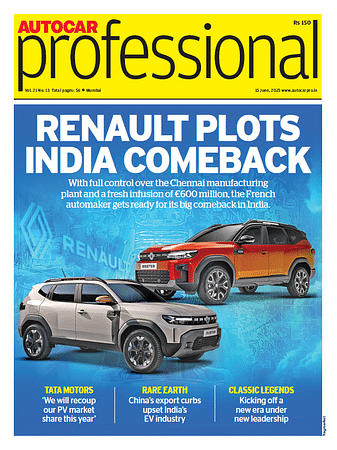Audi tests systems for intelligent factory of the future
In a pilot phase at the Audi plant in Ingolstadt that started in February, two robots independently transport cars from production to an interim storage area
In a pilot phase at the Audi plant in Ingolstadt that started in February, two robots independently transport cars from production to an interim storage area. From there, these driverless transport systems with the name ‘Ray’ later place the sorted Audi models into position according to their shipping destinations, so that logistics employees can load them onto railway wagons.
Audi is testing systems for the intelligent factory of the future: In a pilot phase at the Audi plant in Ingolstadt that started in February, two robots independently transport cars from production to an interim storage area. From there, they later place the sorted Audi models into position according to their shipping destinations, so that logistics employees can load them onto railway wagons. Audi is now preparing the first industrial application. The company is also examining additional areas of application for such robots.
“The autonomous transport of our automobiles could allow us to eliminate long walking distances for our employees and to improve the ergonomics of their work,” stated Prof. Dr. Hubert Waltl, Board of Management Member for Production at Audi AG. “Systems like this also have the potential to significantly increase the efficiency of our processes.”
The idea for the robots with the name ‘Ray’ came from the Bavarian company Serva Transport Systems and gained it a nomination for the German Founder Award already in 2013. Ray is freely movable and highly flexible. It consists of a frame six meters long and three meters wide which uses sensors to determine the position and dimensions of a car, and it then adjusts to it. The robot then carefully grips the wheels and lifts the car up to 10 centimetres. Control software allocates a space where Ray then parks the car. In this way, automobiles up to 5.3 meters long can be quickly moved and temporarily stored in a space-saving manner. As soon as a sufficient number of cars are available on the sorting level for a certain destination, the robot moves them into place for shipment.
RELATED ARTICLES
Volvo Cars signs recycled steel supply pact with SSAB
The recycled steel will be used in selected components of the forthcoming, fully electric EX60 SUV, as well as other car...
Schaeffler and NVIDIA ink technology collaboration to advance digital manufacturing
Using NVIDIA Omniverse, Schaeffler is expanding its production elements, which will be integrated and simulated as digit...
BMW Group to industrialise Virtual Factory, slash production planning costs
What once required several weeks of real-world modifications and testing can now be precisely simulated in the BMW Group...





 By Autocar Professional Bureau
By Autocar Professional Bureau
 08 Mar 2015
08 Mar 2015
 2848 Views
2848 Views









